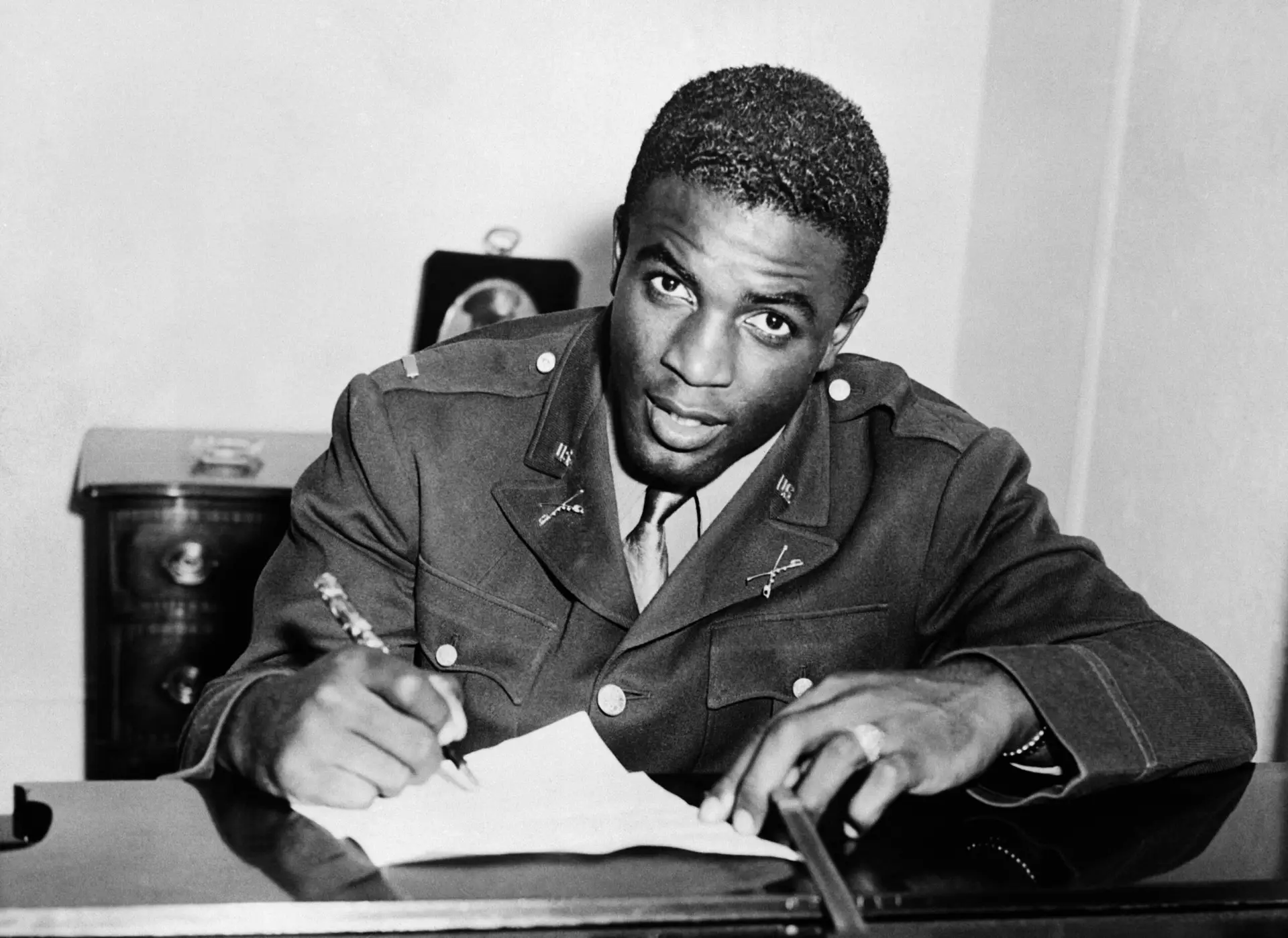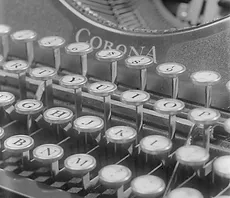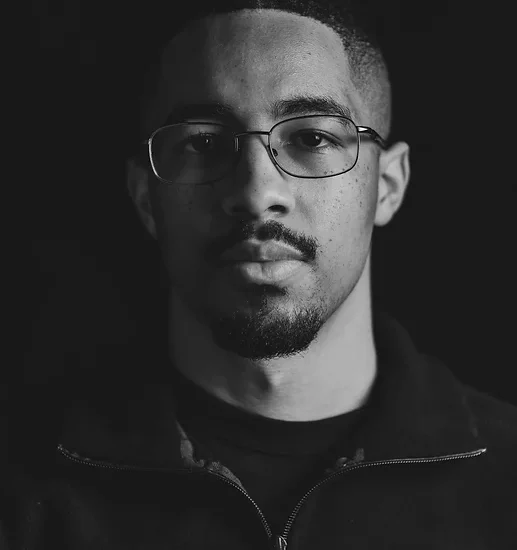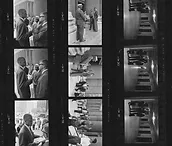Photo by Bettmann Archive/Getty Images
In this image, taken on October 4, 1945, Jackie Robinson is making history. He is sitting down to sign a contract with the Montreal Royals, a minor league affiliate of the Brooklyn Dodgers. In putting his pen to paper, Robinson became the first Black player to sign with a white baseball team. In 1947 Robinson would debut with the Dodgers, breaking the color line and integrating Major League Baseball.
However, the most interesting thing about this image is his dress. Robinson is wearing an Army uniform bearing the rank of second lieutenant.
By posing in his Army uniform, Robinson was sending a message.
For African Americans, military service staked a claim to American citizenship, and it symbolized a “race man,” someone who was dedicated to the betterment and uplift of the Black community. To be an officer was even more exceptional.
Robinson presents himself as a pathbreaker in the military and in baseball.
Robinson was drafted into the Army on April 3, 1942. After reporting at an induction center in Los Angeles, he was assigned to a cavalry unit at Fort Riley, Kansas. Upon his arrival, Robinson applied to Officer Training School (OTS). Though he met the requirements, his application was rejected. Undeterred, Robinson appealed to Joe Louis, the famed heavyweight champion of the world, who was also stationed at Fort Riley.
Louis contacted his friend Truman Gibson, a lawyer and a critical figure in the Civil Rights Movement of the 1960s, who was serving as an assistant aide to the Secretary of Defense. A short time later, Robinson’s application was accepted, and he attended and graduated from OTC, becoming one of the very few African American soldiers to be commissioned as an officer during the war.
The incident forged a friendship between Robinson and Louis. In this picture taken after the war, Robinson is seen visiting Louis during one of Louis’s pre-fight training camps.
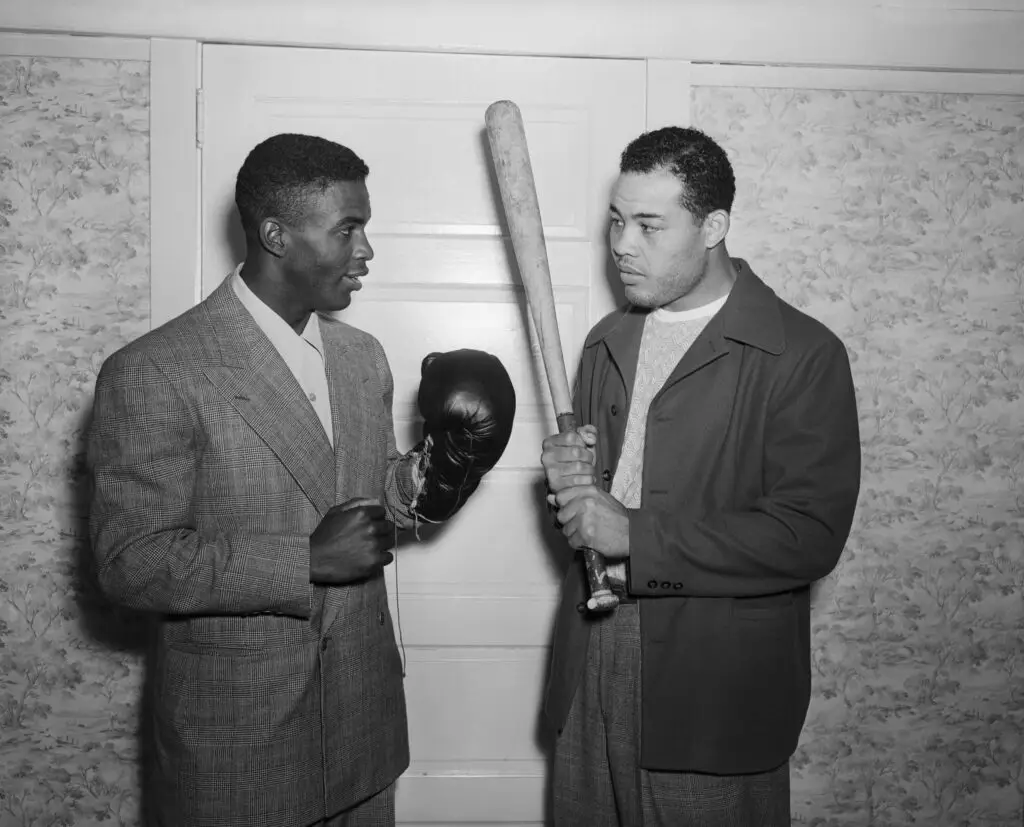
Photo by Bettmann Archive/Getty Images
Robinson was appointed acting morale officer and used his position to advocate tirelessly for Black soldiers stationed at Fort Riley. In a notable incident, he protested the lack of seating for Black soldiers at the base’s segregated post exchange. After a heated conversation with the provost marshal (head of military police), he succeeded.
Robinson’s second notable clash with Army brass was due to his lack of participation in athletics. During the mid-20th century, athletics were an important part of military life and culture. Teams competed amongst themselves and against local and college teams, and it was common to see drafted college and professional athletes playing for their units.

Photo by Bettmann Archive/Getty Images
While at UCLA, Robinson had lettered in four sports including football. Wearing number 28, he can be seen running the football in a 1939 game against UCLA’s crosstown rival USC.
Unfortunately, Fort Riley’s baseball team was segregated. Upon arriving to try out, Robinson was mockingly told to go “play for the colored team,” which did not exist. After this incident Robinson refused to join Fort Riley’s football team.
When he was told that he could be ordered to play football, Robinson responded that while that was true, he could not be made “to play well.” In the end the man, who was undoubtedly among Fort Riley’s best athletes, never represented the base in any organized sport.
However, the most challenging portion of Robinson’s military service came shortly after he was transferred to Camp Hood, Texas in April 1944.
On July 6, 1944, Robinson boarded a military shuttle traveling from Camp Hood. He sat down in the middle section next to the spouse of a fellow Black officer. Observing this, the bus driver demanded Robinson and the woman move to the back of the bus, threatening to “make trouble for them” if they refused.
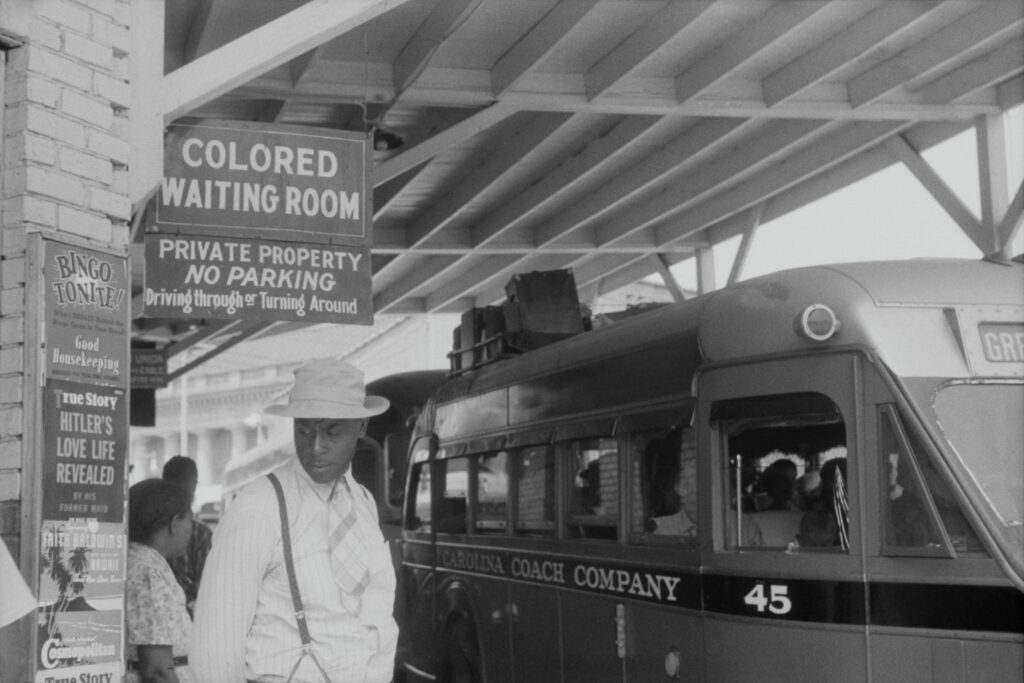
Photo by Jack Delano/PhotoQuest/Getty Images
Segregated seating was the legal and social norm on public transport in the South. However, by June 1944, the War Department had begun to ban segregation on public transportation on military facilities. Robinson was acutely aware of this change and, despite continued threats and harassment by white passengers, refused to move. Upon disembarking to catch his connecting bus, Robinson was met by a crowd and apprehended by military police.
A few days later, Robinson was charged with insubordination, disturbing the peace, conduct unbecoming an officer, insulting a civilian woman, and refusing to obey a lawful order of a superior officer. Colonel Paul Bates, his commanding officer, observing the numerous flaws in the investigation that had led to the charges, refused to sign them.
Robinson was then transferred to another unit whose commander did sign the charges, and he faced a court martial. Ultimately, four of the charges were dropped and Robinson was acquitted on the remaining two.
His defense demonstrated that the episode was “simply a situation in which a few individuals sought to vent their bigotry on a Negro they considered ‘uppity’ because he had the audacity to exercise rights that belonged to him as an American and a Soldier.”
By the time Robinson was acquitted, his original unit, commanded by Bates, was already on its way to Europe, and he had lost much of his desire to remain in the military. In his autobiography he wrote that he was “pretty much fed up with the service.” He requested to be released from the Army and was honorably discharged in November 1944.

Learn More:
Le’Trice D. Donaldson, Duty Beyond the Battlefield: African American Soldiers Fight for Racial Uplift, Citizenship, and Manhood, 1870-1920 (2020)
Jackie Robinson, I Never Had It Made: An Autobiography of Jackie Robinson (2003)
United States v. 2LT Jack R. Robinson
Jackie Robinson and the “Double V” Campaign
The Court-Martial of Jackie Robinson by Major Adam Kama
The Court-Martial of Jackie Robinson by Jules Tygiel


